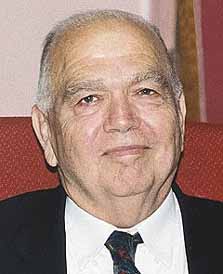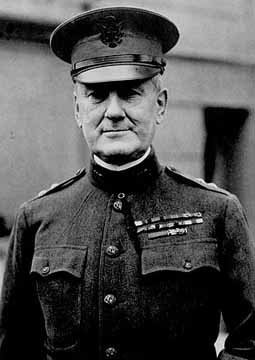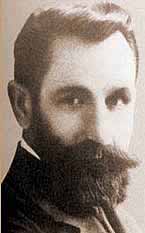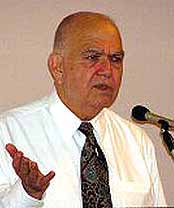|
|
Sam Weems offers a powerful
argument from pgs. 230-233 of his "Armenia -- Secrets of a 'Christian'
Terrorist State" ... using the history of Richard Hovannisian's "The
Republic of Armenia"... that the Armenians' inflated claims of more
than a million casualties is a farce. " It appears, the Armenians
consider every Armenian who was removed to be a victim of genocide. Relocation
is not genocide," Weems wrote, displaying Hovannisian's dishonestly
cooked "two sets of books" figures.
I would have to believe Weems is
presenting these numbers symbolically, to make a point about the general
deception of Armenian history. Surely no objective truth-seeker should take
seriously the bigoted consul J.B. Jackson's claims seriously. But that's the
point: why is Richard Hovannisian taking Jackson seriously? The Armenian
professor is doing so because Jackson happened to be one of those convenient,
Morgenthau-style, anti-Turkish racists, and the opinions of such parties
serves Hovannisian's agenda to a tee. So if Hovannisian expects us to take
Jackson seriously,. someone who said anything and everything that suited his
purpose, then Prof. Hovannisian is leaving himself open to be shot in the
foot... as Weems happily obliges with the following logic.
But even if we finally acknowledge that
the numbers presented by such biased sources as missionaries and consuls must
be taken with a grain of salt, the powerful argument Weems presents holds fast
no less. The fact of the matter is, out of a pre-war population of some 1.5
million (Hovannisian originally presented, in an earlier 1967 book before he
became so hardcore, that the population was between 1.5 million and 2 million;
it would not be long before Hovannisian edged closer to the Armenian
Patriarch's hysterical figure of 2.1 million), the number of refugees or those
who had willingly emigrated from the Ottoman Empire would go on to total well
over 1 million.... particularly when added to the 625,000 Armenians left in
what remained of the Ottoman Empire after the war and before the
implementation of the Sevres Treaty, according to the Armenian Patriarch
himself. (As dissected in TAT's census
page.) Then there are the Ottoman Armenians who died in large numbers when the
Turks weren't in sight.... as the 150,000 or so Hovannisian himself pointed to
(in 1967), famine victims who succumbed while accompanying the Russian
retreats.
|
|
|
| |
 |
|
Prof.
Richard Hovannisian |
It was during this military mission (Harbord)
that Hovannisian published American eyewitness accounts that proves, without any doubt,
the events of 1915 never were one way massacres of Armenians nor could they have been a
genocide. The basis for this statement is the numbers the American eyewitnesses provide.
When totaled, they prove that the Armenians were alive when removed from Ottoman combat
zones after they had started a rebellion. Certainly there were abuses, and people were
murdered, by both Armenians and Turks, but there was never a "genocide," as
Armenians claim today. Consider the actual evidence:
"In Konia, American relief director Mary
Cushman reported that half a million deportees had passed through the city in 1915 and
that she had several hundred Armenian orphans in her care." [Richard G. Hovannisian,
The Republic of Armenia, Volume II, University of California, Los Angeles, P338]
Harbord's group moved on to Aleppo in
northern Syria. "As Aleppo had been the principal dispersal point of the deportees,
the eyewitness descriptions by American Consul Jesse B. Jackson were filled with outrage.
Supported by the testimony of Catholicos Sakal II (Khakayan) of Cilicia, Archbishop
Mushagh Serokian, and members of the local Armenian Council, Jackson estimated that of the
million Armenians deported to the South, about 100,000 arrived in outlying regions of
Sepia and Mesopotamia....." [P339]
There were 500,000 refugees who passed
through Konia and an estimated 1 million passing through Aleppo -- a total of 1.5 million
living, breathing Armenians this far -- but there is more.
"Kharput was the largest relief station
on the Armenian plateau; more than 3,000 orphans were housed in what was left of Euphrates
Collage and in twenty other shelters. Dr. Henry H. Riggs and his assistants, Levan
Harputlian and Dr. Mikayel (Hakakian), reported that about 25,000 of the 175,000 Armenians
in the province remained." [P341]
Okay, that's 1.5 million plus 3,000 plus
25,000 equals 1,528,000 Armenians accounted for thus far.
"At Malatia, in the fertile, fruit-laden
plain southwest of Kharput, the mission learned that fewer than 1,000 of the 12,000
Armenian inhabitants remained." [P342}
The total of living and breathing Armenians
is now 1,528,000.
Hovannisian stated in volume I there were a
total of some 2 million Armenians in the Ottoman Empire (although Ottoman tax records show
this number to be around 1.3 million, which is in closer agreement with European estimates
hovering around 1 million). The Armenians in Istanbul and others not in the military zones
were not "removed." Based on this Armenian historian's own account, there just
couldn't have been 1.5 million Armenians massacred. It appears, the Armenians consider
every Armenian who was removed to be a victim of genocide. Relocation is not genocide.
(...)
|
|
 |
|
General
James G. Harbord |
When Harbord's mission
reached Sivas, they learned the existence of even more Armenian refugees. He learned
that ten thousand Armenians remained in the area and another ten thousand had come
from other places. The total refugees Harbord's mission had been able to account for
had now grown to 1,548,000."[P.344] In addition, consider the hundreds of
thousands of Armenians who were removed to Russian Armenia and who are not even
included in this count.
Hovannisian states on
page 295 of his volume I that there were "500,000" Armenian refugees
stranded in Transcaucasia (Armenia, Georgia, Azerbaijan). This is a total of
2,058,000 Armenians the Ottomans threw out of their country. Hovannisian states on
page 8 of his volume I there were 2 million Armenians in the Ottoman Empire -- how
in the world can 1.5 of them have been massacred as today's Armenians claim? Here is
proof from the pen of an Armenian history professor that there was no massacre or
genocide.
|
| Elaborating
Further on the Above Ideas |
Pgs. 254-258, "Armenia -- Secrets of a 'Christian'
Terrorist State":
On February 17, 1920, the Allies appointed the Armenian Commission.
Two members from each of the European nations were named to hear the claims of the
Armenian delegation. And what wild claims this delegation would hear.
The commission asked the Armenians to draw the boundaries they
wanted on the map. A line was drawn
 |
|
Avetis
Aharonian led the
Armenian delegation from
Armenia. His "rival" was
Boghos Nubar, heading the
delegation from "Turkish
Armenia." |
starting at Tireboli (Tripoli] on the Black Sea and extending
southward over Cheft-Kelkit to the frontier of Kharput vilayet. The question was asked of
the Armenian delegation ‘if they could take possession of the territories they claimed’
Aharonian replied that it could be done if the Allies provided the kind of assistance they
had shown Poland. Kammerer retorted that Poland was in Europe and the situation was
different there. No one would offer troops for the Armenians. Aharonian, nonetheless,
insisted that the Armenian [?] could occupy the territories if it was given weapons,
ammunition, and equipment for 50,000 men and afforded the prestige of advancing under the
flags of the Allied Powers. (Richard G. Hovannisian, The
Republic of Armenia, Volume III, University of California, Los Angeles, P27)
The Armenians wanted the Allies to supply a fifty-thousand-man army.
Since a recent report reflected Armenia had only thirteen thousand troops, where did they
think they would get the additional thirty-seven thousand soldiers? This is an example of
yet another inflated exaggeration made by this rogue terrorist state. To think, this bunch
of thugs had the nerve to ask for the right to march into another nation’s land, flying
each of the European Allies flags, is preposterous.. The Armenian leaders said this would
give them "prestige," but the truth of the matter was that the scheme was
designed to have these flags fired upon, so the Armenians could drag the European Allies
into their little dirty wars.
"At the second meeting of the commission, the Armenian leaders
claimed they had 800,000 of their people ready to move into that part of the Ottoman
Empire to be awarded Armenia."(P29) The following is a list of where the dictators
"claimed" their people would come from:
• 295,000 western Armenian refugees in the Caucasus
• 100,000 Armenians in the Turkish interior
• 120,000 Armenians from Georgia
• 120,000 from Azerbaijan
• 50,000 from Bessarabia, the Crimea, the Don, and
other parts of Russia.
• 10,000 from the North Caucasus
• 30,000 from the Balkans
• 10,000 from Egypt, the Sudan, and Ethiopia
• 30,000 from Karabagh
• 50,000 from the Armenian-American Colony
The Armenians said, they had not included in the numbers "any
of the thousands of Armenian refugees still scattered throughout the Arab provinces or the
several hundred thousand in Cilicia, Smyrna, and Constantinople."(P33)
When one adds the 1,549,000 Armenians the American eyewitnesses
saw go into the Arab countries this total comes to 2,349,000 plus the "several
hundred thousand in Cilicia, Smyrna, and Constantinople."
|
|
The question must be asked again: Since Hovannissian
states on page 8 of his volume 1, "The approximately 2 million Armenians of
Turkey were even more widely dispersed than those of the Russian Empire" and
since he claims 1.5 million of them were killed by Turks in what he calls a
genocide, where then did these Armenian refugees who are supposed to populate the
new Greater Armenia come from? Were they "resurrected"? Or better yet,
were they really not dead in the first place? Hovannissian was discussing the eve of
World War I. On page 4 he says “of the 2 million Armenians in the Romanov Empire
in 1914. . . .“ This quote ties down the time frame to just before the Ottomans
kicked the Armenians out of their country, because they were disloyal during a war.
 |
|
Prof.
Richard Hovannisian |
Note that the Armenian leaders told the peace
conference they had fifty thousand Armenians from their "American Colony in
America" who would return to their homeland. Why would the Armenian leaders
establish an "Armenian-American colony"? The Armenians needed troops to
help them with their wars but they sent their people to establish a colony in the
United States? The answer is that the dictators needed to plant their people in
America to lobby for money and American troops. Americans have been taken in by the
Armenian leaders, whose plot continues to this very day.
In addition to their problem with Armenian
refugee numbers at the London conference, the Armenians were faced with the fact
that both Georgia and Azerbaijan appeared before the commission to present their own
cases for territory and boundaries. Much of the land these two states wanted and had
claim to included the lands the Armenians demanded.
The Armenian commission gave its report on
February 27, 1920. The commission determined that "probably no more than
500,000 would return; even with the 1.2 million in the existing republic, the new
country would have fewer than 2 million Armenians at the outset."(P33)
"The commission concluded that the
formulation of an Armenian state that included former Turkish territory could be
realized only if the Turkish armed forces in the area were withdrawn. . .
."(P34) The most serious blow to the Armenians was the part of the report that
concluded "a European force of from 15,000 to 20,000 men would be needed for
two to three years to enforce the treaty."(P35) The Allies doubted Armenia
could establish a good army of its own and "doubting that the Allies would make
such a commitment, stated Armenia would have to create a national army to do the
job, with arms, munitions, money, and possibly volunteer staff officers provided by
the Allies.”(P35) In other words, it was established that Armenians would need an
Allied army for a few years to turn their dreams into reality and the Allies were
simply not prepared to commit. Also, Armenian arguments of raising an all-Armenian
army were not found credible.
There were two topics near and dear to the
hearts of Armenian leaders: Getting free handouts from the Christian world and
"reparations." The Armenian leaders told their stories of mass murder and
massacres to the Armenian Commission and their claims were considered. They
"petitioned the conference to accord reparations to individuals and communities
that had been victimized by the Turkish government. Earlier; the Armenians had
estimated their damages in the Ottoman Empire to be equivalent to 19 billion French
fran[c]s and those in Russian Armenia to be equivalent to 5 billion. In a memorandum
of March 3, the delegation explained that those statistics had been based on
preliminary data and were subject to revision."(P57-58) The Armenians were
leaving the door open to ask for more if they could just get their first demand
approved.
The Armenian leaders told the commission how it
was that "no group had suffered more than the Armenians; they had been
deported, robbed, plundered, violated, and massacred. It was only proper that the
conference require the Turkish government to pay reparations and indemnities for the
terrible physical, material, and moral devastation."(P58) Needless to say, the
Armenian leaders didn’t tell the commission they had started a rebellion within
the Ottoman Empire and this is why they were "deported.."
French delegate Albert Kammerer adamantly
pointed to the legalist difficulties involved in allowing Turkish subjects to claim
reparations. He argued that Turkey would be sufficiently punished by the loss of
extensive territories and the transfer without compensation of government properties
therein. The commission supported Kammerer’s position that reparations on an
individual basis should be waived. In its final report on March 27, the finance
commission noted that it was "unanimously of [the] opinion that no special
provision for reparation for minorities should be included in the financial clauses
of the treaty."(P59-60)
In plain language, the European Allies
evaluated all the facts, heard the begging by the Armenian leaders and their demand
for reparations and then gave them zero dollars for their made-up claims of
damages. Hovannissian evaluated the Allied decision differently in his slanted and
biased opinion as he writes, "Reparations for Armenian losses and suffering,
however, were brushed aside."(P60)
|
| |
|
|